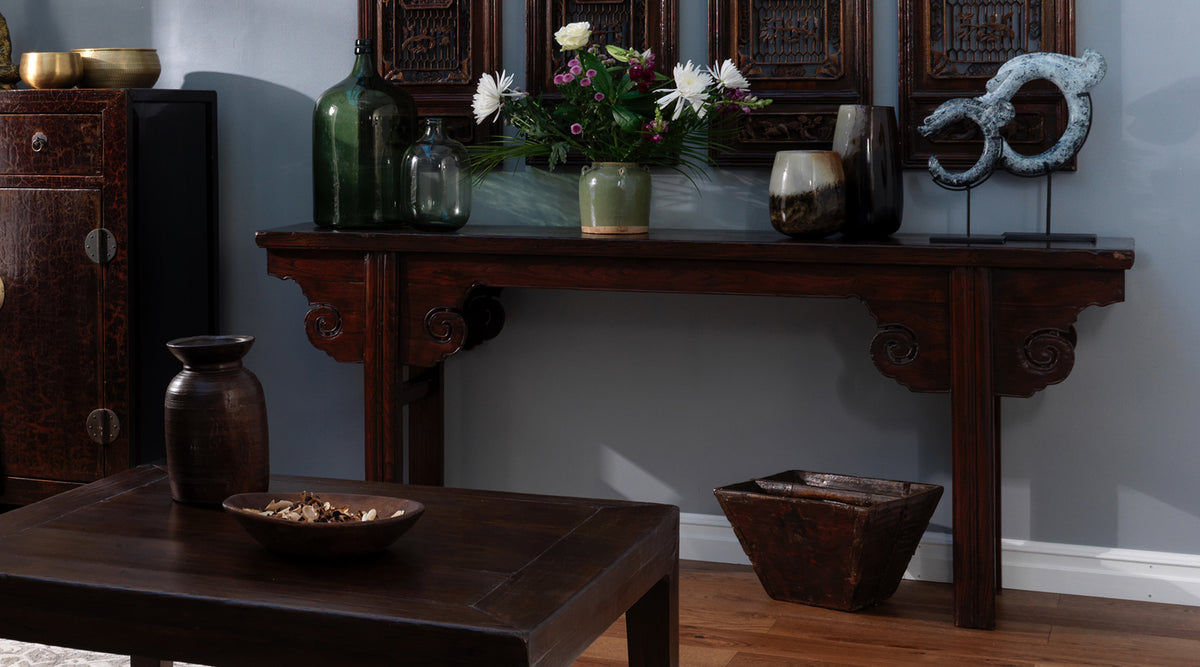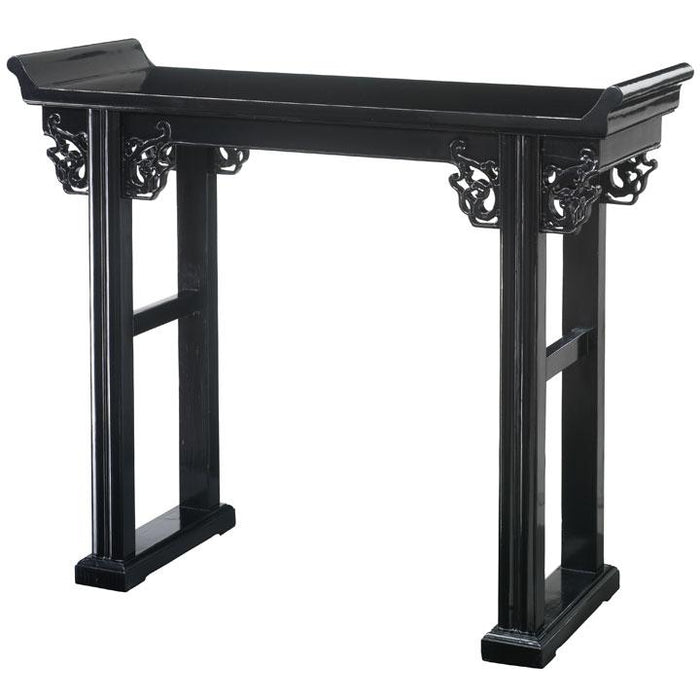
Antique Chinese Altar Tables, Shrines and Ancestor Worship: Bridging the Past and Present
Antique Chinese altar tables, shrines and ancestor portraits are unique artefacts from China’s history, which once held significant roles in traditional Chinese homes and which are now finding their place in contemporary interiors.
Historical Significance and Traditional Uses

In ancient China, altar tables and shrines were integral to daily life and spiritual practice. They were commonly found in homes, temples, and ancestral halls, serving as the focal point for worship and offerings. They were often elaborately carved and decorated, reflecting the craftsmanship and artistic traditions of different dynasties.
The primary function of these tables was to hold ancestral tablets, which represented deceased family members. Offerings of food, incense, and other items were placed on the tables during rituals to honour ancestors and deities. This practice originated in Confucian beliefs and emphasised respect, obedience and care for parents, elders and ancestors, as well as for one's heritage. Altar tables were also used during important festivals and ceremonies, making them central to Chinese spiritual and social life.
Characteristics of Antique Altar Tables and Shrines
Antique Chinese altar tables and shrines are distinguished by their unique designs and intricate details. They are typically made of hardwoods such as elm, rosewood, or walnut, known for their durability and beauty. The designs often feature motifs like dragons, phoenixes, and lotus flowers, symbolizing power, rebirth, and purity.
As with Chinese antique furniture in general, altar tables were usually built without nails, relying on traditional joinery techniques that ensure stability and longevity. This craftsmanship showcases the artisans' skills whilst reflecting the philosophical and aesthetic principles of Chinese culture, which value harmony and balance.
Incorporating Antique Altar Tables in Contemporary Interiors

In modern homes, antique Chinese altar tables and shrines can serve as striking statement pieces, blending unique history with contemporary design. Their rich patina and intricate carvings add depth and character to any space, making them ideal for both minimalist and eclectic interiors.
- As a Console Table: Placing an antique altar table in an entryway or hallway can create a dramatic first impression. Its historical charm provides a sophisticated feel, and it can be used to display decorative items or family photos.
- As a Sideboard or Buffet: In dining areas, these tables can function as sideboards or buffets. Their spacious surfaces are perfect for serving food and drinks during gatherings, while the storage below provides useful storage space for glassware, drinks and dining essentials.
- In Living Rooms: An antique altar table can anchor a living room, serving as a unique coffee table or a media console. Original antique altar tables vary in height and structure, so this versatility makes them ideal for various uses, complimenting both traditional and modern furniture.
- In Bedrooms: Using an altar table as a vanity or a bedside table can add a touch of elegance and serenity to a bedroom. Its history imbues the space with a sense of continuity and timelessness.
- As a Focal Point: For those who appreciate art and history, an altar table can be the centrepiece of a room dedicated to showcasing antiques and collectibles. Paired with appropriate lighting and decor, it’s sure to become a much-loved and admired space that tells a story.
 Ancestor Worship and Ancestor Portraits: An Enduring Cultural Connection
Ancestor Worship and Ancestor Portraits: An Enduring Cultural Connection
Ancestor worship in Chinese culture reinforces familial bonds and cultural identity. This practice is based on the belief that deceased ancestors continue to influence the living and can offer protection and guidance. Regular offerings, prayers, and rituals are performed at the home altar to ensure the well-being and favour of these ancestral spirits.
Significance of Ancestor PortraitsIn contemporary interiors, ancestor portraits can be incorporated thoughtfully to maintain cultural traditions while blending with modern design aesthetics. Displaying these portraits in a dedicated space, possibly alongside an antique altar table, is an effective way to create a harmonious balance between heritage and contemporary eclectic style.
Ancestor paintings look striking whether displayed as a single picture or in groups. Often painted to portray high ranking officials, these unusual examples of traditional Chinese wall-art sometimes include symbolic images of animals such as cranes, peacocks or tigers; used to donate civil positions or military rank.





laissez un commentaire